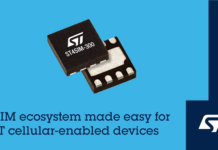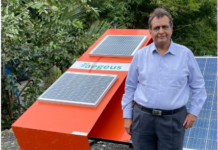
In the future, renting equipment will be facilitated by digital solutions, which will speed up the service tremendously and benefit all parties. Having this in mind, the EIT Digital Advanced Connectivity Platform for Vertical Segments High Impact Initiative developed a Proof-of-Concept prototype allowing construction tools to communicate the status of their key components via Internet-of-Things (IoT) when returned to the depot. By succeeding in this, the prototype is paving the way to the coming of 5G networks on it is part.
The ACTIVE prototype* was developed for Europe’s second largest rental service company Cramo. Cramo has around 230,000 rental units, and today, each must be inspected and serviced every time they are returned to the depot after rental. Some inspection points require a lot of time from a mechanic, which makes the return process labour-intensive. In addition, there is a risk of over-servicing the machines when mechanics change parts that are not yet due for replacement.
The Task Leader, Arjun Kamath, Developer at Ericsson Finland said:
“If the machine, at the time of return, can automatically send its identification and status to a central system, the return process could be automated for the bulk of the returned equipment. Hence, we could make the machine “talk” about how it was used. Essentially, to tell how long it was used, whether it was used properly and the like without having to open it up. Since such a thing was not done before, one concrete goal was to figure out if this was even doable or not. And, it was.”
The power cutter used in the prototype automatically sends the status of key items when returned to the depot by using wireless Bluetooth technology. The inspection is then performed based on actual status of the power cutter. Technology components used in the prototype were selected to target requirements on energy consumption, computation power, memory consumption, and light-weight device management.
Bluetooth Low Energy (BLE) was used for connecting the power cutter with Ericsson developed short-ranged capillary network gateway. The fourth-generation, 4G, mobile network connectivity was used between the gateway and Ericsson’s IoT platform, hosting various cloud-based services such as machine device management, gateway management, and machine analytics.
The team knew that the IPv6 internet protocol is well-designed and well-suited for IoT deployment as the end-to-end connectivity improves security solutions while the stateless auto-configuration feature removes the need to manually configure the address of each device. Further, the large IP-address space provided by the protocol is facilating connecting the billions of devices expected to be in operation in the future.
Arjun Kamath, concluded:
“Though the prototype sits on top of the ACTIVE IoT connectivity platform, in this particular case we had to carefully study the use-case and understand the radio technology and its limitations as well. We quickly realised that the low-energy Bluetooth connection will be one of the key technologies for future Internet-of-Things applications. Although the data rate is rather low, up to one to two megabytes per second including overhead, the energy performance is still impressive, resulting in long battery lifetime. However, the low data rate is not the best choice for large data volumes, for example when the machine has been rented out for a long time.”
As an option to uploading this big log from the machine, the data could be analysed on the machine itself and report only the summary back to the gateway. The emerging Narrow-Band Internet-of-Things technology would allow more frequent data upload, and future 5G networks will reduce the time to upload also big data volumes.
A detailed description of the Proof-of-Concept Project is available on the Ericsson Research Blog site.
For more information visit: http://www.eitdigital.eu/


















